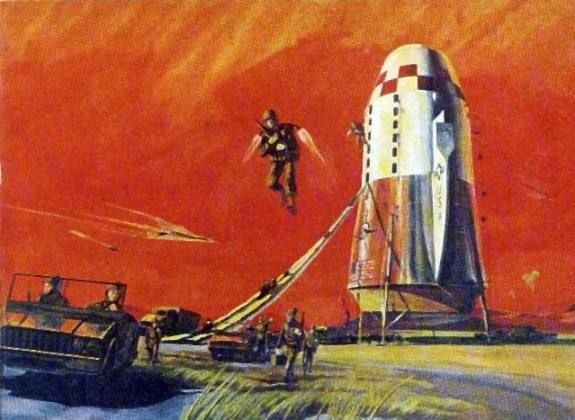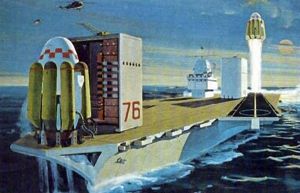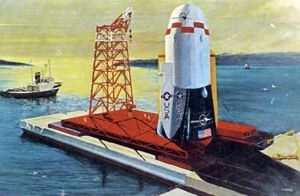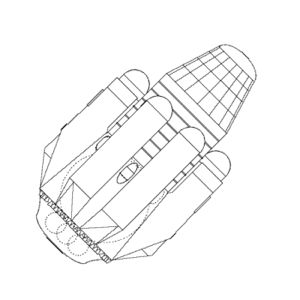
Home - Search - Browse - Alphabetic Index: 0- 1- 2- 3- 4- 5- 6- 7- 8- 9
A- B- C- D- E- F- G- H- I- J- K- L- M- N- O- P- Q- R- S- T- U- V- W- X- Y- Z
Ithacus

Ithacus Assault
Credit: NASA
AKA: Ithacus Senior. Status: Study 1966. Payload: 450,000 kg (990,000 lb). Thrust: 80,230.00 kN (18,036,420 lbf). Gross mass: 6,363,000 kg (14,028,000 lb). Height: 64.00 m (209.00 ft). Diameter: 24.00 m (78.00 ft). Apogee: 185 km (114 mi).
The Ithacus plan was apparently inspired by general Wallace M. Greene, who proposed a rapid-strike battalion of 1200 soldiers. These "rocket commandos" would have been deployed by an intercontinental rocket so the need for overseas US Army bases might be greatly reduced. The gigantic 6400-metric ton "Ithacus Sr." was supposed to serve this strategic need.
The basic configuration was very similar to ROMBUS, i.e. eight hydrogen drop tanks + rocket-powered vertical landing using a plug-nozzle aerospike engine. The landed weight would have been about 500t. One of the biggest problem was returning the 64m tall vehicle back to the launch site… Self-ferry was out of the question since the rocket would have produced a liftoff thrust of 80200KN -- way too high without a custom-built launch pad with sound suppression, water cooling etc.. Shorter "hops" of a few hundred kilometers would however have been possible so the plan was to fly the partially fueled vehicle to a coastal harbor. Ithacus Sr. would be transported by a Saturn-type "crawler" onto a barge for return to the United States.
The smaller "Ithacus Jr." version would have had an intercontinental cargo capability of 33.5t or 260 soldiers. Douglas proposed to launch two Ithacus Jr. vehicles from an Enterprise-class nuclear aircraft carrier, which also would have produced liquid oxygen and hydrogen propellant from seawater. Power for the electrolysis process would have been taken from the carrier's nuclear reactor: 112MW would have been required to produce 1150t of oxygen and 164t of hydrogen from 1470t of water. The rocketships would be stored inside hangars. One Ithacus Jr. would serve as a troop carrier while the other would deploy unmanned cargo to the same military site. The Ithacus Jr. vehicles would land 600 meters apart to deploy a fully armed group of 260 soldiers.
LEO Payload: 450,000 kg (990,000 lb) to a 185 km orbit at 28.00 degrees. Crew Size: 1200.
Family: Manned spacecraft, orbital launch vehicle, SSTO. Country: USA. Launch Vehicles: Ithacus. Agency: Douglas. Bibliography: 36.
 | Ithacus Launch from Credit: NASA |
 | Ithacus Recovery Credit: NASA |
 | Ithacus Credit: © Mark Wade |
Back to top of page
Home - Search - Browse - Alphabetic Index: 0- 1- 2- 3- 4- 5- 6- 7- 8- 9
A- B- C- D- E- F- G- H- I- J- K- L- M- N- O- P- Q- R- S- T- U- V- W- X- Y- Z
© 1997-2019 Mark Wade - Contact
© / Conditions for Use